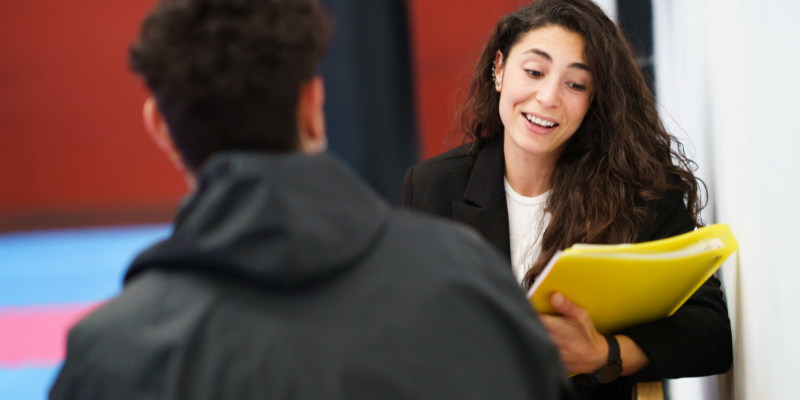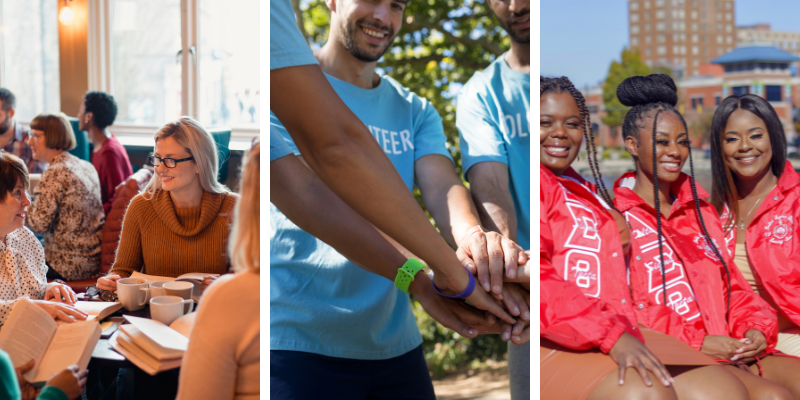Behind the magic of hosting an incredible game needs to be a team of talented people. Planning a sports event requires meticulous attention to detail. Along with working around the needs of your team, finding a dedicated group of staff is essential.
But it doesn’t stop with the hiring process. Organizing and executing a successful sporting event requires a dedicated and well-trained team. This guide provides a comprehensive framework for staffing and training team members to ensure a smooth and memorable experience for everyone.
STEP 1: Defining Your Roles
The first step to staffing your sporting event is planning your needs and how having additional staff will help with those needs. You’ll need an idea of how many staff members you’ll need to help the event run smoothly. Identify key roles and set responsibilities.
- Clearly outline the roles needed for the event, such as ticket takers, concessions workers, security, medical personnel, and volunteers.
- Specify responsibilities for each role to avoid confusion and ensure accountability.
Your team will likely include a mix of full-time, part-time, and volunteer staff. As you think through the responsibilities for each role, write down approximately how many hours each week would be needed to fill the positions. Are they needed only on game days? Or is there additional work involved? Similarly, think about the experience required for each position. You may be able to offer jobs that require little expertise to volunteers in exchange for free tickets or other incentives.
STEP 2: The Recruitment Process
In order to find potential candidates, tap into your existing network, advertise on social media, Evaluate potential candidates’ strengths and weaknesses, and how they would contribute to the team.
Reach Out to Past Team Members and Volunteers
Former employees know their jobs, which means they can get an event up and running quickly. It’s also much less expensive to re-hire staff that was let go during the pandemic, or who simply haven’t worked with you since last season. Make a concerted effort to reconnect with our previous volunteers and team members before you try recruiting new folks.
Be Social
Consider using social media to advertise your job openings. Instead of just posting on your own profile or business page, which only reaches people who already know you, amplify your message with some paid job listings or ad campaigns.
Create an ideal employee persona by thinking about who your existing team members are: what do they do in their free time? What shows do they watch? Where do they hang out online? (If you don’t know, ask!). Then use those insights to narrow down the target audience on your campaign. You can target locations as specific as a zip code to zero in on the right audience. Using narrow targeting will help make sure your ads are only seen by relevant users so you can avoid wasting money on impressions by users who would not make good candidates for your position.
Get Comfortable with Texting
Texting is the preferred method of communication among younger workers in particular, even more than email. Start using text as early on in the recruiting process as possible to avoid being ghosted by potential candidates. For example, send interview reminders via text rather than through email. Once a team member is on board, it may be useful to have a group thread where you can communicate with your entire team: send reminders, answer questions, and recognize those who are going above and beyond.
Conduct Virtual Interviews
Use a video platform such as Google Meet or Skype for interviewing job candidates. The convenience of being able to interview from home makes it easier for potential hires, and it’s probably easier on you, too! It’s much easier to schedule and reschedule as needed, and you may find that candidates are more readily available for a virtual interview than an in-person meeting.
STEP 3: Sample Training Program
Now that you have an all-star crew, it’s time to train them to be the best they can be. Training should aim to be as robust as possible. Training should cover more general event management and safety procedures, as well as role-specific training. Prepare for problem-solving situations.
- Develop a comprehensive training program for each role, including both pre-event and on-site training sessions.
- Include information on event logistics, emergency procedures, customer service, and any specific skills required for each role.
You don’t need to conduct all of these training programs on your own. Bringing in an expert from your local hospital or fire department to train staff on first aid, for example, can be a great alternative. Some organizations, like the Red Cross, also offer first aid training which could help your team gain the basic skills they’ll need to keep guests safe during a sporting event.
Communications Training
- Whether you’re in the ticket booth, on the field, or in the back office, everyone needs to communicate seamlessly on game days.
- Create a clear, written set of rules for staff to follow, including which channels to use (personal cell phones, walkie-talkies, a group chat, or Slack channel, for example) and WHO they should contact with specific questions.
- For example, if a concessions worker has trouble with their POS, who should they call first? If there’s a fan injury in the grandstands, which team members need to be alerted?
Customer Service Training
- Emphasize the importance of excellent customer service, as team members will be interacting with participants, spectators, and other stakeholders.
- Train staff on handling inquiries, providing information, and resolving issues in a professional and courteous manner.
Emergency Response Training
- Conduct training sessions on emergency response protocols, including evacuation procedures, first aid, and communication during critical situations.
- Ensure that all staff members are familiar with the location of emergency exits, first aid stations, and other crucial facilities.
Technology and Equipment Training
- Provide hands-on training for any technology or equipment used during the event, such as registration systems, communication devices, and audio-visual equipment.
- Ensure that staff members are comfortable using the tools they will be working with.
Team Building Activities
- Organize team-building activities to foster a sense of camaraderie among staff members.
- Encourage open communication and collaboration to enhance teamwork during the event.
Dress Code and Professionalism
- Establish a dress code that aligns with the event's theme or branding.
- Emphasize the importance of professionalism, including punctuality, maintaining a positive attitude, and representing the event in a favorable light.
Mock Event Simulations
- Conduct mock event simulations to allow staff members to practice their roles in a controlled environment.
- Identify and address any issues that may arise during the simulation to enhance preparedness.
Feedback and Continuous Improvement
- Encourage feedback from team members to identify areas of improvement. Debrief with the entire team after your first game, and continue to hold regular meetings to improve communication and processes.
- Use the feedback to refine the training program for future events and recognize outstanding contributions.
Final Thoughts
A great game day experience for fans starts with assembling an outstanding team, both on and off the field. By following this guide, sports team owners can build a competent and motivated team capable of delivering a successful sporting event.













